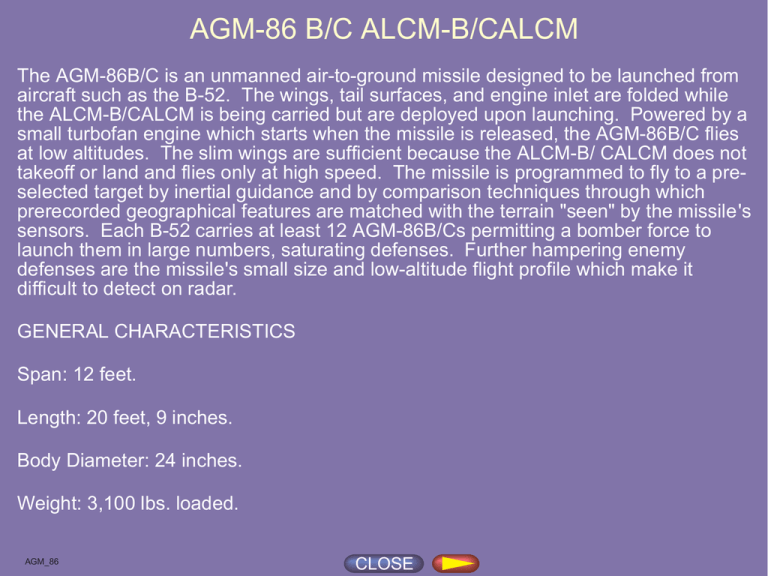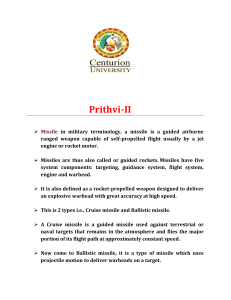AGM-86 CALCM
advertisement

AGM-86 B/C ALCM-B/CALCM The AGM-86B/C is an unmanned air-to-ground missile designed to be launched from aircraft such as the B-52. The wings, tail surfaces, and engine inlet are folded while the ALCM-B/CALCM is being carried but are deployed upon launching. Powered by a small turbofan engine which starts when the missile is released, the AGM-86B/C flies at low altitudes. The slim wings are sufficient because the ALCM-B/ CALCM does not takeoff or land and flies only at high speed. The missile is programmed to fly to a preselected target by inertial guidance and by comparison techniques through which prerecorded geographical features are matched with the terrain "seen" by the missile's sensors. Each B-52 carries at least 12 AGM-86B/Cs permitting a bomber force to launch them in large numbers, saturating defenses. Further hampering enemy defenses are the missile's small size and low-altitude flight profile which make it difficult to detect on radar. GENERAL CHARACTERISTICS Span: 12 feet. Length: 20 feet, 9 inches. Body Diameter: 24 inches. Weight: 3,100 lbs. loaded. AGM_86 CLOSE Armament: AGM-86B W-80-1 nuclear warhead. AGM-86C conventional high explosive. Engine: Williams International F107-WR-101 turbofan of 600 lbs. thrust. PERFORMANCE Maximum Speed: 500 mph. Range: About 500 miles. Operating Altitude: Approximately 100 to 500 feet above terrain. Maximum Altitude: Above 20,000 feet (est.). AGM_86 CLOSE











